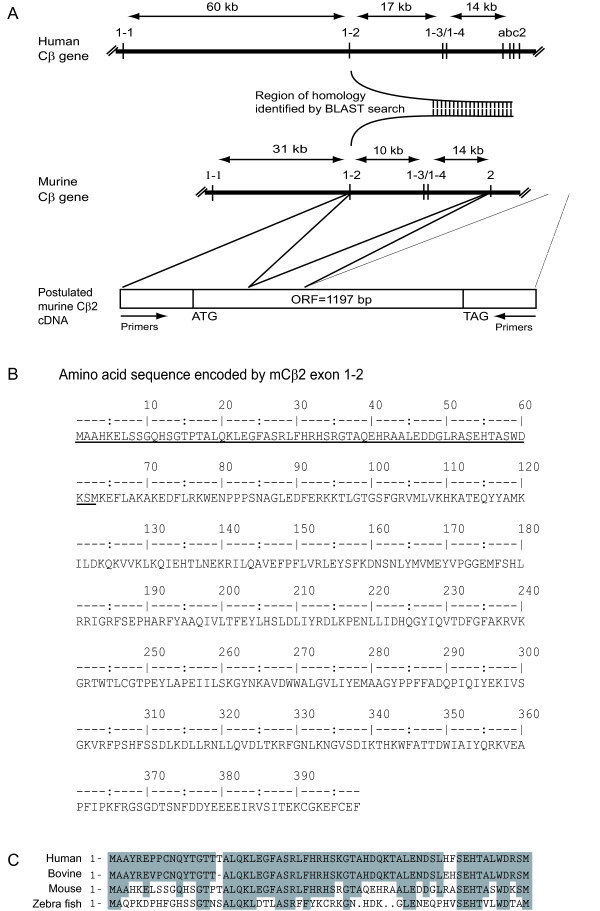Figure 2.
Identification of a novel mouse cDNA sequence encoding a Cβ splice variant homologous to human Cβ2. (A) Schematic representation of the human (upper) and murine (lower) Cβ gene. The intron sizes between exons (vertical lines) are indicated by horizontal arrows. A region of high similarity (identified by BLAST (tblastn) homology search in the published mouse genome) to human exon 1–2 is indicated between the genes (bent/vertical lines). A hypothetical cDNA sequence is indicated, with an 1197 base pair open reading frame (ORF 1197 bp), and a start (ATG) and stop (TAG) translation codon for murine Cβ2 is given, based on the identified sequence and the known mouse Cβ cDNA sequence (bottom). (B) Deduced amino acid sequence of mouse Cβ2 shown in one letter code. The Cβ2 splice variant specific sequence of 62 amino acids is underscored. (C) Cβ2 specific sequences from human, bovine, mouse and zebrafish were aligned and amino acid sequences conserved between species were boxed. Compared to the level of conservation in the catalytic core of C subunits, the Cβ2 specific sequence shows a lesser degree of conservation.

